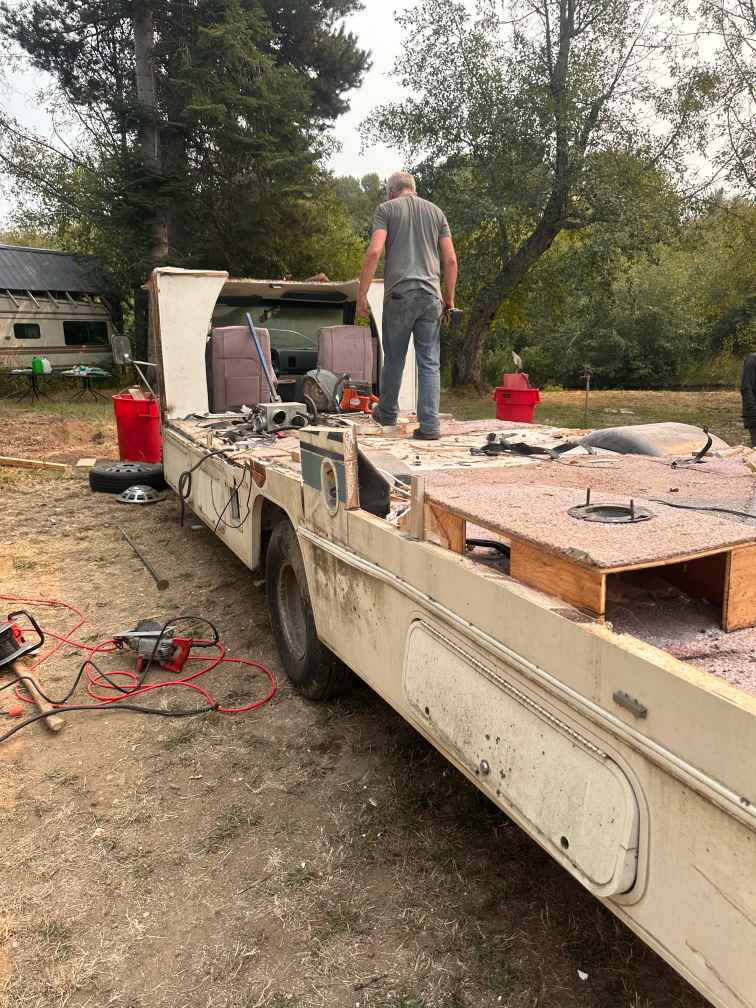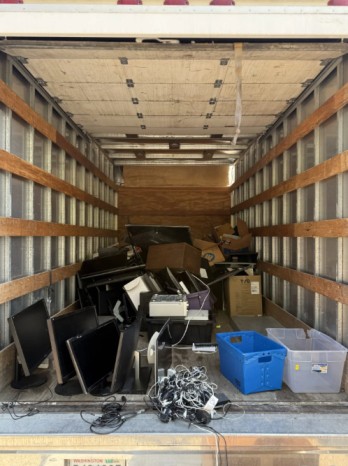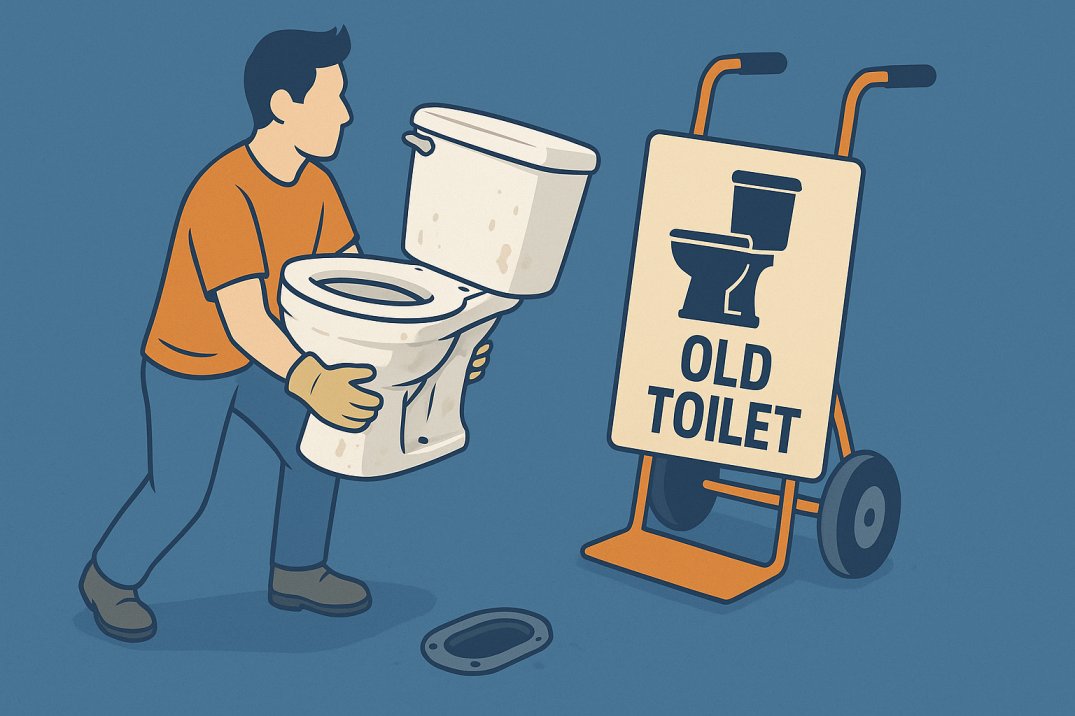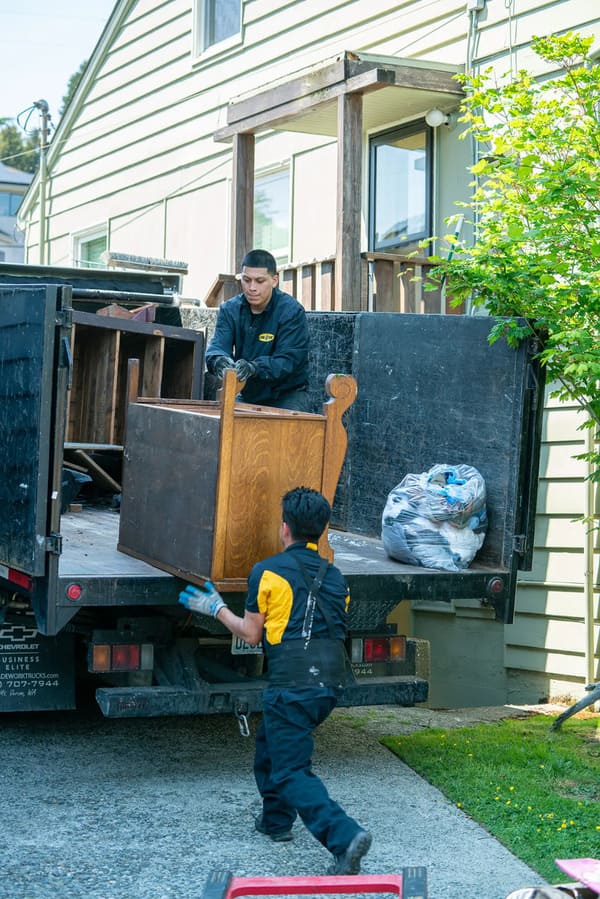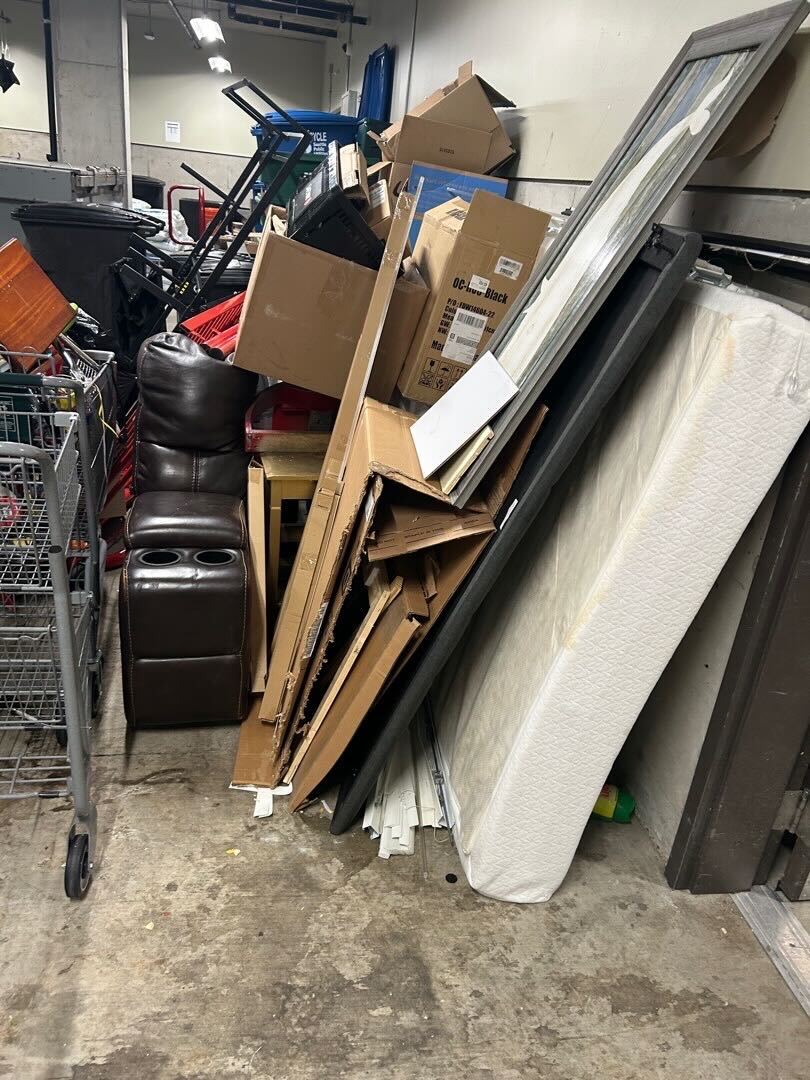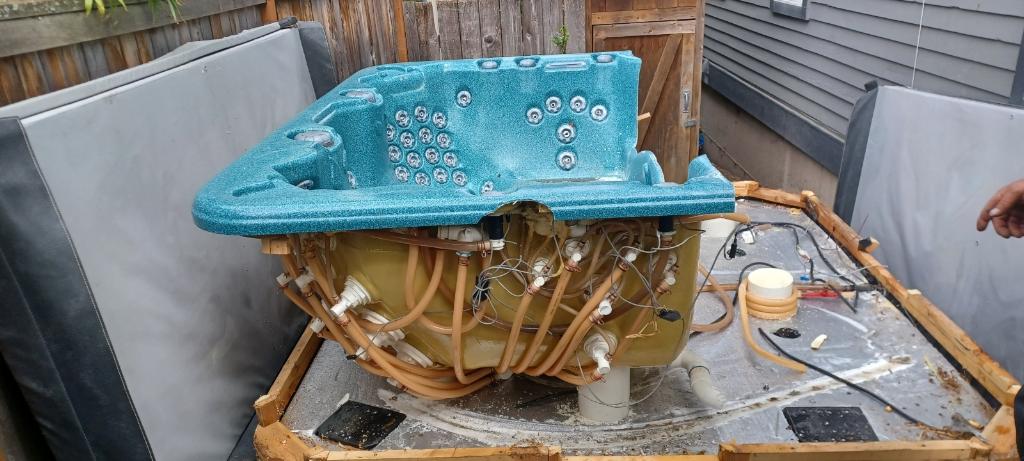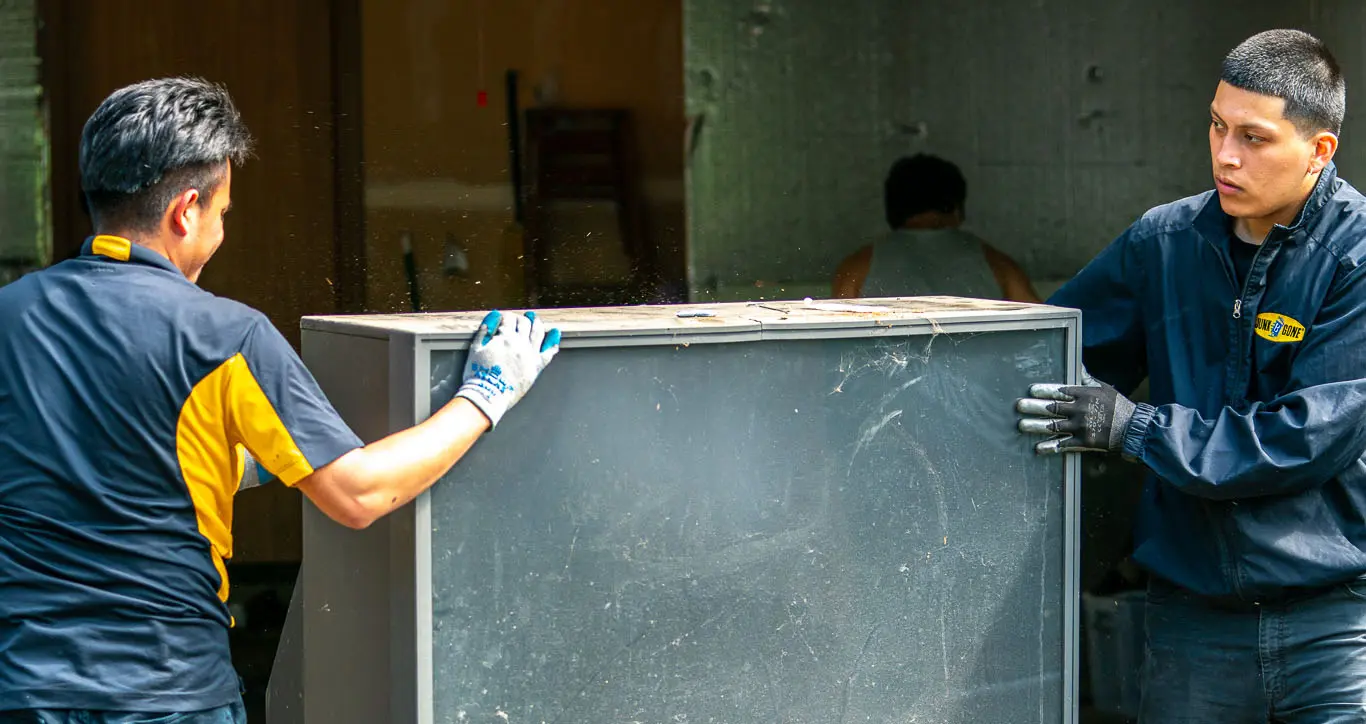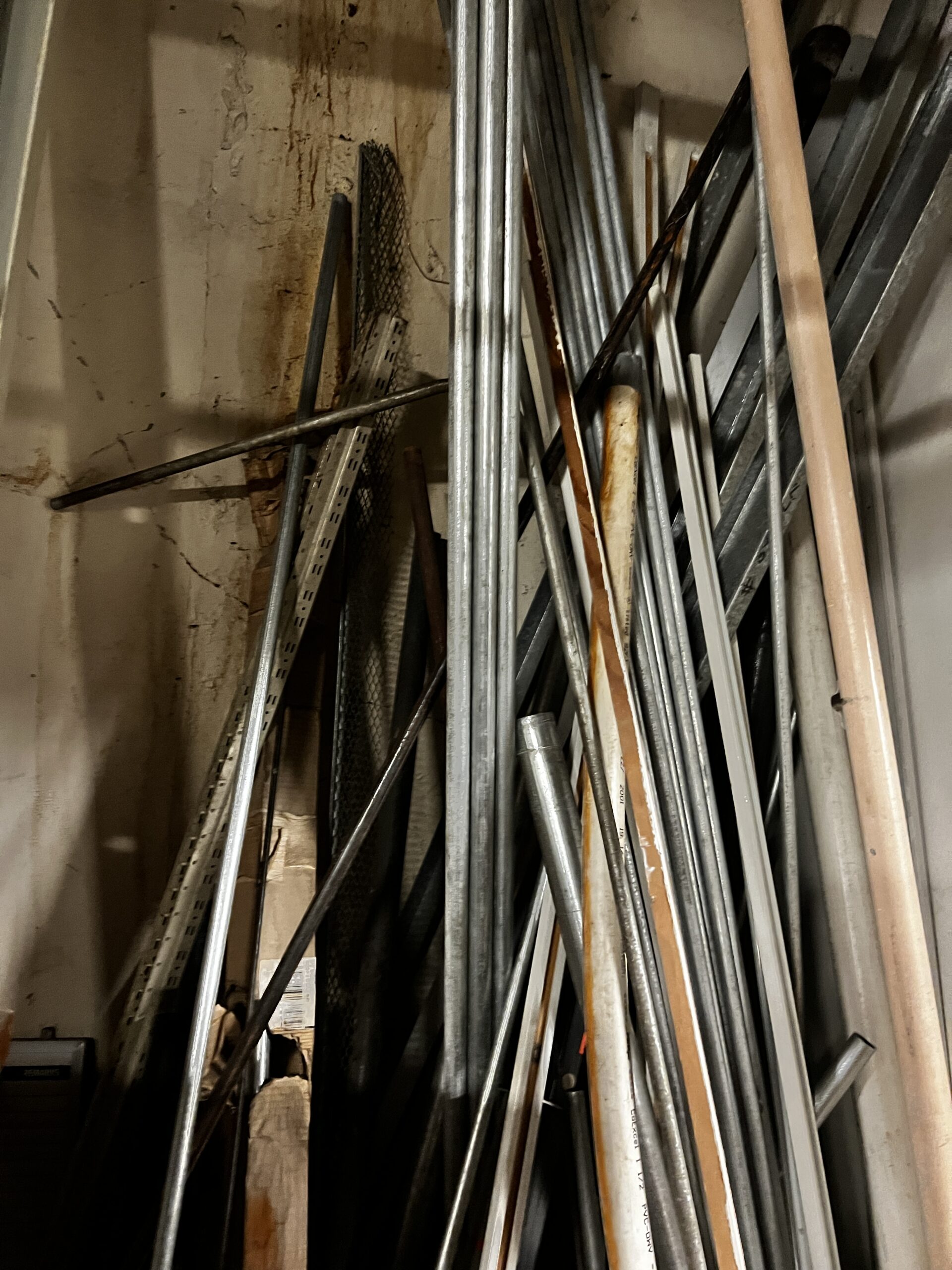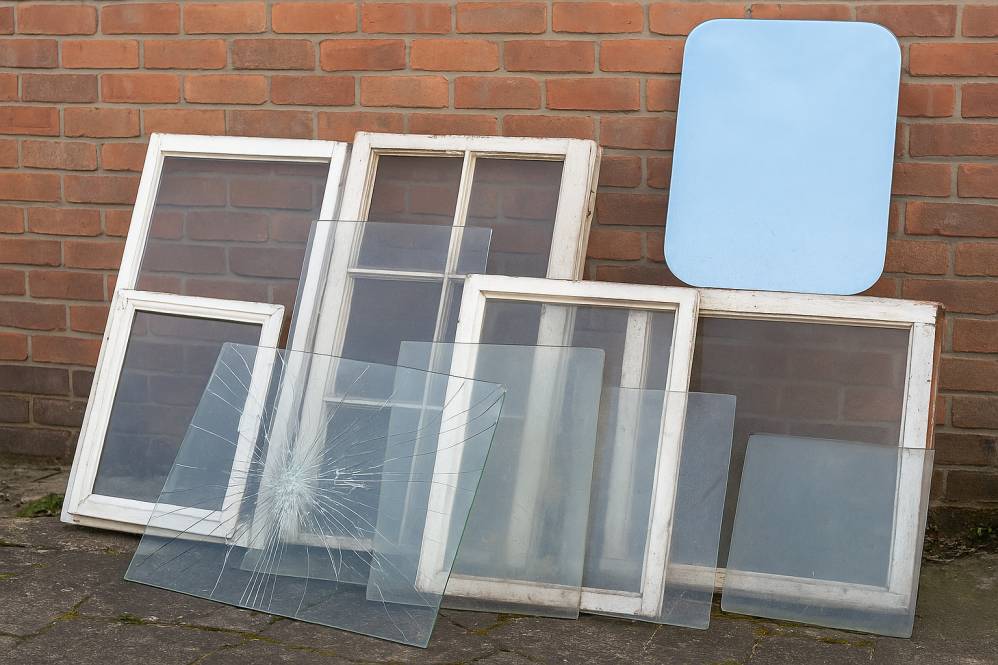
If you’ve ever replaced a window, broken a mirror, or upgraded your home décor, you’ve probably faced the same question: What do I do with all this leftover glass? It’s not as easy as tossing it in your curbside bin—and doing it wrong can be dangerous or even illegal.
Glass, mirrors, and windows can be tricky to dispose of because they often can’t be recycled the same way bottles and jars are. Not only can sharp edges cause injuries, but improperly tossed items could harm waste workers or damage sorting machines at recycling centers.
That’s why knowing how to handle and dispose of these items properly is so important. Whether you’re clearing out your garage or managing leftover renovation materials, making the right choices protects you, your community, and the environment.
Why Proper Glass, Mirror, and Window Disposal Matters
Disposing of glass the wrong way isn’t just a hassle—it can be a real danger to people and the planet. Unlike regular household waste, glass items like windows and mirrors don’t break down easily and can’t always be tossed in the recycling bin.
Here’s why you should care:
- Safety hazards – Broken glass can easily cause cuts and injuries, whether it’s in your trash can, on the curb, or at a landfill. It’s risky for both you and sanitation workers.
- Environmental impact – Improperly dumped glass doesn’t decompose. It lingers in landfills and natural spaces, sometimes for thousands of years.
- Recycling limitations – Not all glass is created equal. Tempered glass (like windows) and mirrored glass are often not accepted in standard curbside recycling programs because they contain coatings or chemical treatments.
Can You Recycle Glass, Mirrors, and Windows?
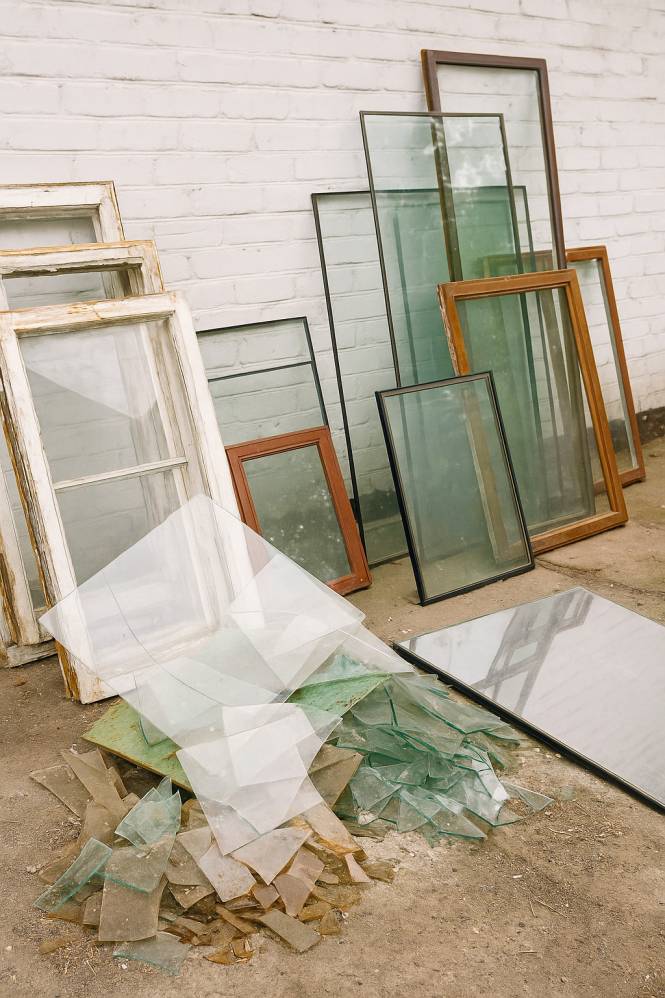
Recycling glass might sound straightforward—after all, we toss bottles and jars into our blue bins all the time, right? But when it comes to glass from mirrors and windows, things get a bit trickier. Not all glass is created equal, and understanding the difference is essential for responsible disposal.
Why Not All Glass Is Recyclable
Standard glass containers like food jars and beverage bottles are made with soda-lime glass. It melts at a consistent temperature and is easy to recycle, which is why most curbside programs accept it. On the other hand, window panes, mirrors, and certain glass furniture pieces are often treated or manufactured with other materials that change their properties entirely.
- Mirrors are coated with a metallic reflective layer (often aluminum or silver nitrate), which makes them non-recyclable in standard facilities.
- Windows and patio doors are frequently made with tempered, laminated, or double-paned glass, which is engineered to be stronger and safer—but also much harder to recycle.
- Tinted or insulated glass, found in many homes and office buildings, also contains additives or gases that disrupt traditional recycling processes.
Because of these differences, mirrors and window glass can’t just be tossed in with your wine bottles. They require special handling, and in most areas, recycling centers won’t accept them alongside regular glass.
Why It Matters
If you mistakenly add mirrors or treated glass to your recycling bin, you can contaminate the entire load. That means even the recyclable materials might get sent to a landfill. Proper sorting helps your local recycling system work efficiently and reduces unnecessary waste.
So What Can You Do?
The best move is to check with local waste management services or specialty recycling centers. Some areas do have facilities that accept construction glass, mirrors, or even broken panes—but it’s not the norm. In many cases, you may need to safely dispose of them through bulk trash pickup or take them to a transfer station.
How to Safely Dispose of Broken Glass
Dealing with broken glass can be tricky—and dangerous. Whether it’s a shattered window, a cracked mirror, or a broken picture frame, disposing of sharp glass the wrong way can lead to injuries for you, sanitation workers, or anyone handling the trash. So let’s break down the safest way to do it, step by step.
Step-by-Step Guide to Safe Glass Disposal
1. Suit up for safety
Before you do anything, protect yourself. Put on thick gloves (preferably work gloves or gardening gloves), closed-toe shoes, and consider wearing eye protection if you’re handling a lot of shards.
2. Use cardboard or thick paper to collect shards
Instead of grabbing pieces directly, use a stiff piece of cardboard or dustpan to scoop up the larger shards. Sweep the smaller bits with a broom or damp paper towel to avoid leaving behind dangerous slivers.
3. Tape up sharp edges
For bigger pieces of broken glass, use duct tape or painter’s tape around the edges. This prevents them from slicing through trash bags and hurting someone later. If the glass is very sharp or jagged, wrap it in old newspaper or bubble wrap for an extra layer of safety.
4. Use a sturdy container
Place the wrapped glass into a durable cardboard box or plastic container. Avoid flimsy bags—they tear too easily. Clearly label the box with “Broken Glass – Handle With Care” using a permanent marker.
5. Seal and dispose of properly
Tape the box securely shut. In most areas, broken glass should go in the regular trash—not recycling. However, always check with your local waste disposal service to make sure you’re following the correct rules.
Don’t Forget the Cleanup
After everything’s been packed up, double-check the area for tiny slivers. Use a flashlight to catch glints of glass that might otherwise be missed, especially on tile or hardwood floors. Vacuum the area thoroughly, including nearby rugs or fabric that may have caught shards.
What to Do with Old Mirrors
Old mirrors can be a headache to deal with, especially when they’re large, heavy, or too fragile to toss in your regular trash bin. Whether you’re renovating, redecorating, or just trying to declutter, it’s important to handle mirror disposal safely—and smartly. Luckily, you’ve got a few great options.
When Trash Pickup Isn’t an Option
Most curbside garbage services won’t accept large or heavy mirrors. Not only are they difficult to handle, but they also pose a risk to sanitation workers if they break in the bin or truck. If your mirror is over a certain size (typically around 2 feet by 3 feet), it’s best to explore other methods of disposal.
And if it’s cracked or damaged, don’t forget to follow the same safety steps you’d use with broken glass—wrap it carefully and label it before disposing.
Donate if It’s in Good Condition
If your mirror is still intact and usable, don’t trash it—donate it! Many local charities, thrift stores, schools, or community centers might be thrilled to take it off your hands. You can also check platforms like:
- Facebook Marketplace
- Buy Nothing groups
- Craigslist (Free section)
Just be sure to mention the size, weight, and condition of the mirror, and consider offering help with transport if it’s bulky.
Repurpose for DIY Projects
Feeling crafty? Old mirrors make awesome upcycling materials. With a little creativity, you can turn a dated mirror into:
- A chalkboard or cork board
- A decorative tray or tabletop
- A garden mirror wall
- A stylish headboard accent
You’ll find plenty of tutorials online to guide your mirror transformation project—just make sure to wear protective gear when working with glass.
Call a Junk Removal Service
If the mirror is cracked, too big to move, or you simply want it gone without hassle, calling a junk removal company is a smart move. They’ll:
- Pick it up from your home
- Handle it safely
- Make sure it’s disposed of or recycled properly
Some services even repurpose or donate salvageable items, which helps reduce landfill waste.
How to Dispose of Old Windows
Getting rid of old windows might sound simple—but it’s not as easy as tossing them to the curb. Whether you’re replacing a single window or doing a full renovation, knowing how to properly dispose of the glass, frames, and hardware will save you time, reduce risks, and help the environment.
The Frame Material Matters
Before tossing your window out, consider what the frame is made of—it affects how and where you can dispose of it:
- Wooden frames: These can often be repurposed or composted (if untreated), or disposed of in standard construction waste.
- Metal frames (like aluminum): These are often recyclable at local scrap yards or metal recycling centers.
- Vinyl frames: Typically non-recyclable through curbside bins, but some specialized facilities may accept them.
If you’re unsure, check with your local waste management or recycling center for specific rules in your area.
If the Windows Are Intact
Still have a window that’s in good condition? Don’t toss it! You can:
- Donate it to a local reuse center like Habitat for Humanity ReStores.
- Sell it through local marketplaces or home renovation forums.
- Repurpose it into a greenhouse wall, a decorative mirror frame, or a rustic picture frame project.
Reusing intact windows not only reduces waste, but also gives them a new life in someone else’s project.
If the Windows Are Broken
Broken windows are a different story. Because of the sharp shards and safety concerns, you’ll need to:
- Wear gloves and goggles while handling
- Wrap glass pieces in thick cardboard or newspaper, then tape it shut
- Label the package as “Sharp Glass” so sanitation workers know to handle it carefully
Once safely wrapped, check whether your local transfer station or waste facility accepts construction debris or bulk waste. Many places have separate drop-off areas for glass and building materials.
If you’re dealing with multiple windows or just want it done fast, consider hiring a junk removal service. They’ll pick everything up—glass, frames, and debris—and either recycle, repurpose, or dispose of it responsibly.
Local Disposal Options
Disposing of glass, mirrors, and windows the right way often means finding the right local service or program—because tossing them in your curbside bin is rarely an option. The good news? Most communities have multiple solutions if you know where to look.
Municipal Recycling Centers and Special Drop-Off Days
Many towns and cities operate municipal recycling facilities where residents can drop off items that aren’t accepted in regular curbside bins. This often includes window glass, mirrors, and even tempered glass from shower doors.
- Check your local waste management website for “special collection days” dedicated to bulky or construction-related waste.
- Some areas require you to schedule an appointment before drop-off, especially for large items like full window frames.
- Make sure the glass is properly wrapped or contained—most centers won’t accept loose shards for safety reasons.
Construction and Demolition Waste Programs
If you’re replacing multiple windows during a remodel, you might qualify for your city’s construction and demolition (C&D) waste program.
- These programs collect bulk building materials like wood, metal, and glass in large dumpsters or at special facilities.
- In some cases, contractors can haul everything for you as part of the project, saving you from a second disposal trip.
- Many C&D programs sort and recycle materials, which helps keep reusable items out of the landfill.
Local Junk Removal Services
When you just want everything gone without the hassle, junk removal companies are a solid choice. Many accept glass, mirrors, and window frames—whether intact or broken—and handle both the heavy lifting and disposal.
- Some services focus on eco-friendly disposal, meaning they’ll donate intact windows or recycle materials whenever possible.
- They also come prepared with safety gear and equipment so you don’t risk cuts or injury during handling.
- While this option usually costs more than self-disposal, it’s the fastest and most convenient route—especially for larger loads or urgent cleanouts.
Environmentally Friendly Disposal Tips
Throwing glass, mirrors, and windows into the trash isn’t just wasteful—it’s a missed opportunity. These materials can often be reused, repurposed, or recycled in ways that are good for the planet and even good for your home décor. With a little creativity (or the right local resource), you can keep them out of the landfill entirely.
Upcycling Ideas: From Garden to Home Décor
Old glass and windows aren’t just junk—they’re DIY gold. For example:
- Garden projects – Use old window panes as cold frames to protect seedlings, or as walls for a small greenhouse.
- Decorative accents – Frame a mirror with reclaimed wood for a rustic wall piece, or use broken glass in a mosaic tabletop.
- Outdoor features – Turn tempered glass into sparkling garden edging or incorporate it into stepping stones for a unique look.
These projects not only reduce waste but also add a personal touch to your living space.
Donating to Salvage Yards or Building Reuse Centers
If you’re not into DIY, there’s still a green way to get rid of your old materials—donation. Many salvage yards, building reuse centers, and Habitat for Humanity ReStores gladly accept intact windows and mirrors. They resell these items to homeowners, artists, and contractors who can give them a second life.
- Make sure the items are clean, structurally sound, and free from dangerous cracks.
- Call ahead to confirm what sizes and types of glass they accept.
- Some centers even offer pickup services for larger donations.
The Benefits of Keeping Glass Out of Landfills
Glass can take thousands of years to break down in a landfill. By recycling or reusing it, you:
- Reduce demand for raw materials like sand and limestone.
- Cut down on energy usage in glass manufacturing.
- Prevent sharp or hazardous debris from harming landfill workers or wildlife.
When you choose to recycle, upcycle, or donate, you’re helping the environment and supporting a circular economy, where resources are reused instead of wasted.
Frequently Asked Questions (FAQ) about Disposal of Glass, Mirror, and Windows
Can you throw glass in the garbage?
Technically, yes—you can throw glass in the garbage in many areas, but that doesn’t mean you should. Throwing glass in the trash often means it ends up in a landfill, where it will take thousands of years to decompose. More importantly, loose or broken glass in garbage bags can injure sanitation workers. If you must throw it away, always wrap it in several layers of newspaper or cardboard and tape it securely so sharp edges are covered. Whenever possible, choose recycling or reuse options instead—it’s safer and better for the environment.
Are mirrors considered hazardous waste?
Mirrors are not classified as hazardous waste in most locations, but they cannot be recycled like bottles or jars because the reflective coating on the back is often made with materials that contaminate standard glass recycling. This means they usually need to be disposed of separately. Large or intact mirrors can be donated to thrift stores, building material reuse centers, or artists who might repurpose them. If broken, they should be carefully wrapped and labeled “Broken Glass” before disposal to prevent injury.
Where can I recycle windows near me?
Recycling windows can be tricky because window glass is manufactured differently than container glass, making it incompatible with many curbside recycling programs. Instead, check for:
- Local recycling centers that accept construction and demolition materials.
- Building salvage yards and nonprofits like Habitat for Humanity ReStores.
- Special recycling events hosted by your municipality.
Always call ahead to confirm what types of window glass they accept, as rules vary by region.
What is the safest way to dispose of broken glass?
The key word here is safety—for you and for anyone handling your waste.
- Wear thick gloves to protect your hands.
- Place the shards on a sturdy piece of cardboard or inside a rigid container.
- Wrap the package securely in newspaper or bubble wrap.
- Use strong tape to keep it sealed.
- Clearly label it “Broken Glass – Handle with Care” before placing it in the trash.
By doing this, you reduce the risk of cuts, injuries, and accidents while ensuring your waste is handled responsibly.






